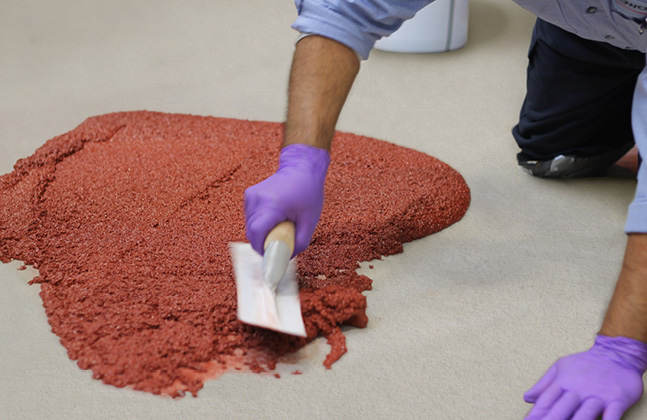Poor intercoat adhesion occurs when a coating does not effectively adhere to the underlying one – a problem that has led to many industrial floors failing. The stronger the bond between the coatings then the longer the flooring system will maintain a functional surface and act as a barrier against contaminants, corrosives and impacts.
What we have to remember is that there are many causes and many different factors that can contribute to an adhesion-related failure of a protective coating system.
Identifying Poor Intercoat Adhesion
Peeling, flaking or delamination of the top coating away from the previously applied primer or epoxy coating is a sure sign of poor intercoat adhesion. The issue with this symptom is that it exposes the base coating or substrate to the oils, greases, liquids and dirt of the site.
We’ve compiled a list of the top four reasons for poor intercoat adhesion to help you identify and rectify potential problems.
Cause 1:
Improper preparation of the previous coating.
Prevention:
Prior to applying multiple coats of material, the previous coating must be properly prepared and it is crucial that all contaminants are removed. These contaminants include dust, dirt, water or amine blush.
Cause 2:
Most coatings have a range of time, or “recoat window”, in which a subsequent coat can be applied without additional preparation. Recoating outside of this window can lead to a floor failure.
Prevention:
Check the manufacturer’s product data sheet for the recoat window times. Do not exceed the recoat window and if it has been mistakenly exceeded, consult the manufacturer’s recommended recoat procedure.
Cause 3:
When coatings are installed at temperatures lower than 5°F above the dew point moisture may condense on the surface and act as a bond-breaker which could cause intercoat adhesion problems.
Prevention:
Check the temperature and humidity of the substrate and air to ensure that the substrate’s temperature is at least 5°F above the dew point.
Cause 4:
Not using a primer before applying the coating.
Prevention:
Make sure to use a suitable primer for the coating that has been specified before applying the new layer.
Fixing a Failure from Poor Intercoat Adhesion
The only real solution to correct a poor adhesion is to sand blast, or by mechanical means such as grinding or sanding, remove the surface contaminants and all of the flaking coating until the surface has a dull, unspoilt finish. Once this has been done the recoating needs to be undertaken again, following the manufacturer’s application instructions to the letter.
As the rectification measures are very expensive, as well as time and labour intensive, the emphasis needs to be on prevention to ensure that every precaution has been taken to promote effective intercoat adhesion.







